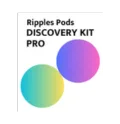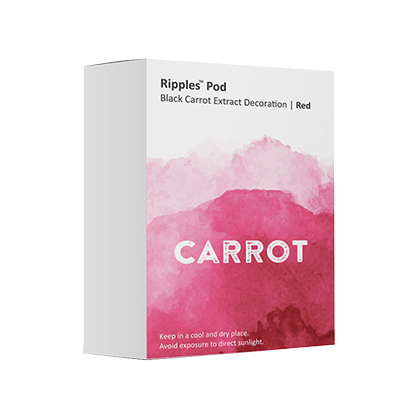For as different as people are all over the world, there are a few things that nearly everyone can agree on: that love is worth fighting for, that family comes first, and that beer is very good.
International Beer Day coming up on August 2nd is a celebration of everyone’s favorite malted beverage, and to honor the worldwide love of a crisp, cold pint, here’s a look at eight awesome trends blowing up the beer industry across the globe, from the United States to Europe and the UK and all the way to Japan.
Beer Trends in the United States
Coffee beer
Can we get an amen? At long last, two of the biggest life necessities have come together in caffeinated, alcoholic harmony. Pabst Blue Ribbon is one of the major players doing it with PBR Hard Coffee, an iced latte with all the right ingredients: Arabica and Robusta coffee beans, milk, vanilla flavoring and 5% alcohol. Craft breweries are getting in on the buzzed beer action as well with offerings from the likes of Dark Horse, Cambridge and Lagunitas that all boast at least 50 mg of caffeine per pint.


Beer and coffee is a pairing that makes perfect sense. Not only does the inclusion of caffeine keep those who imbibe from getting sleepy, a common complaint with alcoholic beverages, but both beer and coffee are beverages that appeal to connoisseurs, with drinkers appreciating the attention paid to quality of ingredients as well as careful roasting and brewing processes. This is a match made in small batch heaven.
Guzzling and gaming
It used to be that football was America’s undisputed pastime, and a cold beer paired perfectly with a game on a sunny day. Football is still well loved and a beer at a football game is still a specific kind of bliss, but as gaming climbs the rankings of America’s favorite pastimes it only makes sense that beer companies are clamoring to get in on the action.

To that end, Miller Lite has created the Cantroller, a working video game controller in the form of a beer can. The Cantroller has a flexible circuit board, ten buttons, Bluetooth technology, a battery that works for three hours. Oh, and it’s full of beer. The Cantroller was debuted at the Electronic Entertainment Expo, or E3, to much fanfare.

- Photo credit: EventMarketer.com
Beer Trends in Europe and the UK
Beer selfies
Europe and the UK have long been admired as bastions of sophistication by the rest of the world, so leave it to this region to start pairing art and beer. Thanks to beer printers like the Ripple Maker, the foam on top of a tall, refreshing pint is no longer a blank space but a perfect velvety canvas for surprisingly detailed selfies, photos, logos, messages and other images created over an easy to use app.
This beer foam art has been put to use perhaps most notably by famed brewer Guinness, who introduced the Stoutie on International Stout Day in 2018, treating visitors to the Guinness Storehouse in Dublin to a professionally-taken photo perfectly printed on their pints of stout. The Ripple Maker PM is still in use at the Storehouse and this bev-top technology is spreading across the world, as evidenced by the hashtag #stoutie.

Eco-conscious production
Like many production processes, the act of mass producing beer takes quite a toll on the environment. The process uses a lot of water and energy and can produce waste by-products and emissions. However, since the beer industry relies on natural resources for brewing, it’s helping to lead the way when it comes to finding greener ways to produce its products.
Breweries throughout the UK and Europe (as well as in the United States) are working to come up with ways to reduce the amount of waste produced by brewing, to reduce their carbon footprints, and to safeguard hops and other harvests from the effects of climate change, among other improvements. Notably, Toast Ale is cutting down on food waste by replacing 1/3 of the barley used in brewing with surplus bread, while Stella Artois has committed to providing clean water to 3.5 million people in third world countries by 2020.

- Photo credits: Toast Ale
Low alcohol beers
Sacrilege as it may seem to some, there are plenty of people out there who love beer but don’t want the buzz that can come with it. One of the most interesting beer industry trends is a surge in the number of people drinking low- or no-alcohol beer, especially in Europe. The German Association of Brewers now estimates that one out of every 15 beers consumed in the country is low or no-alcohol. German brewery Störtebeker says sales of their 0.5% alcohol beer increased 40% from 2017 to 2018.
Where alcohol-free beer drinkers were once stuck with weak and watery beverages produced as an afterthought, breweries are now competing to produce robust and flavorful alcohol-free beer that any beer lover would enjoy – without the hangover.
Updated German beer technology
There is perhaps no region in the world as serious about beer production as Germany. Traditional German and Bavarian breweries still comply with the Bavarian Beer Purity Law of 1516, which dictates the ingredients that can be used in brewing – water, hops, malted barley, and yeast. If anything else goes in, it can’t be called beer.
But as German tastes begin to shift and show appreciation for American craft beers, these tradition-respecting German breweries have started to get creative and technologically innovative. German breweries are now using AI, automation and all-in-one brewing systems that make it easier than ever to maintain the exact taste and quality, batch after batch and year after year. To vary tastes and appeal to those discerning craft beer lovers, German breweries are playing with hop variants to create new flavors and even dry hopping, which is adding hops to beer after fermentation in order to change the taste.
Beer Trends in Japan
Funky beer flavors
Half a world away from Germany, Japan changed their beer-related laws in 2018 to loosen regulations regarding which malt beverages can be classified as beer. As a result, Japanese craft beer brewers are currently all about incorporating surprising ingredients to create unique and surprising flavors. This includes everything from strawberries, mandarin oranges and coriander seeds to soy sauce, seaweed, shellfish and bonito flakes. One brewery, Yokohama Craft Beer Laboratory, has even created a watermelon flavored beer that’s green. It’s called Too Much Melon Ale, and Yokohama’s head brewer says it’s very popular at craft beer festivals.
Plenty of foam
How much foam belongs on top of a glass of beer can be a surprisingly contentious issue around the world, but in Japan, there’s only one right answer: lots and lots of foam. Though the amount of foam preferred by Japanese beer drinkers has drawn a bit of scorn from imbibers in other nations, the Japanese will not be dissuaded from their preference. The last few years has seen the development of a handheld mug that dispenses extra foam, a bar device that dispenses frozen foam on top of a pint, and a beer can clip-on that helps create foam as your pour at home. Has anyone told these foam lovers about the Stoutie?
Beer here, beer there
It doesn’t matter if you prefer the purest Bavarian brew, a foamy shellfish special from Japan, an alcohol free beer, one with a caffeine buzz, or a cold pint with your smiling face on top of it. What matters is that you love beer, just like most of the rest of the world. So on International Beer Day on August 2nd, order one up or crack one open and raise a glass to an amazing beverage that brings so many people together. That’s the magic of malted barley, hops, water, and any other ingredient allowed by local law.



























